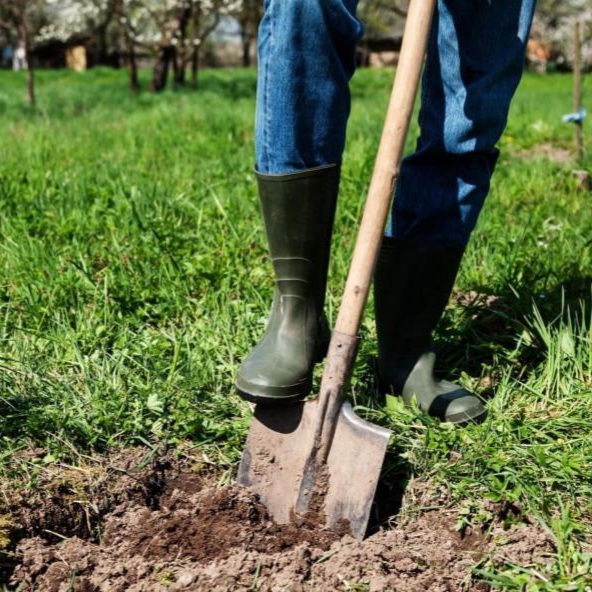Garden looking a little tired? You are not alone. This time of year poses several challenges for the Atlanta gardener. Here are some tips for how to manage this time of year and what you can be doing to prepare for the fall planting season.
grasses
The standout plant in the August garden tends to be our native grasses. They are very drought tolerant and absolutely thrive during the sweltering heat of late summer. Most have attractive seed heads that add extra interest to a perennial bed and make lovely additions to dried arrangements in the fall. These should be planted before mid September to give them the best chance of surviving our traditionally wet winters. However, once established, native grasses will soon become one of your favorite additions to your summer garden! Some of our favorites include:
Pennisetum (Fountain Grass)
Panicum (Switchgrass)
Schizachryum (Little Bluestem)
prepare beds for fall plantings
Get your soil straight! If you are planning for a fall planting or preparing to switch out your edible garden, now is the time to feed your soil. Amending with compost, manure, soil conditioner, etc. will help break up the compacted clay to make a nice fluffy planting mix, while also giving those nutrients time to meld into your existing, or native, soil. Adding expanded slate will also help with compacted soil by keeping the clay from re-compacting over time. These products can also be very effective when it comes to deterring critters from digging in you beds
fertilizing
Be wary of fertilizing this time of year. If you think your plants are looking tired, that’s because they are! If the thought of being force fed a large bowl of chili this time of year makes you want to burst, that is what fertilizing your plants in August feels like for them! Promoting new growth in stressed plants can open them up to disease and infestations. If you feel you must do something, scrape back any old mulch and leaf litter and replace with a 2-3 inch layer of fresh mulch to help with water retention. Once the temperatures start to drop in September, you can pull that mulch back again and add a ¼” layer of a mild fertilizer like worm castings around your plants. Replace the mulch over the fertilizer to keep it from washing away, and once the winter rains kick in, those nutrients will slow-release down into the soil and replenish the nutrients lost during the growing season.
Finish pruning
Trees and shrubs will need time to harden off the new growth promoted after pruning. For some of your plants that will only bloom on old wood, like hydrangeas, you want to make sure your plant has enough time to push out new stalks and form buds before first frost. All summer pruning should be completed by Labor Day.
Check for disease & infestations
Clear leaf litter and cut back spent foliage to help prevent mold or insects. Stressful conditions make your plants more susceptible to disease and infestations, so removing spent foliage can help increase airflow which, in turn, will help your plants be able to fight off these ailments. Remove any diseased stalks to help prevent spreading, and destroy them (it’s best not to put these in the compost as the disease will likely survive in the pile and live to infect again!). Extreme signs of stress can also mean the plant is not well suited for its current spot. If you feel like a plant is suffering from incorrect light conditions, consider moving it once the temperatures cool off.
water like crazy!
One of the main issues we’ve been facing this summer is trying to keep things watered, especially new plantings. Countless plants have lost their lives in the struggle that is an Atlanta August. Regulating your watering schedule is the best way to help. In general, your established plants will be able to fend for themselves, but might need a little supplemental water during drought (aka August!). These plants are usually happy with a deep soaking once a week. New plantings will need more frequent waterings. Generally 2-3 time per week, but the best way to check is by testing the top two inches of the soil. Stick your finger in and feel the dirt, if it comes out dry it’s time to water! Waterings should completely saturate the soil and not be applied until the previous watering has had time to dry out a bit. Believe it or not, it is very easy to over-water plants this time of year!
planning
With fall planting season right around the corner, now is a great time to plan out projects. It’s also a good time to assess the state of your garden and take note of what is working and what might need some adjusting. Losing a plant can be frustrating or downright upsetting, but it’s all part of the learning curve. Even the most experienced gardeners occasionally make the sad procession to the compost pile to place the remains of their spring hopeful on top. That doesn’t mean you are a failure. We are dealing with living things which is unpredictable, as well as environmental factor, which can be even more unpredictable. Mourn, assess, make a plan, and try again. It can also be helpful to talk to other gardeners (and your friendly neighbors at G*H!) about problems to see if they've been through something similar and can offer experience-based solutions. Don’t lose confidence and never stop planting!







